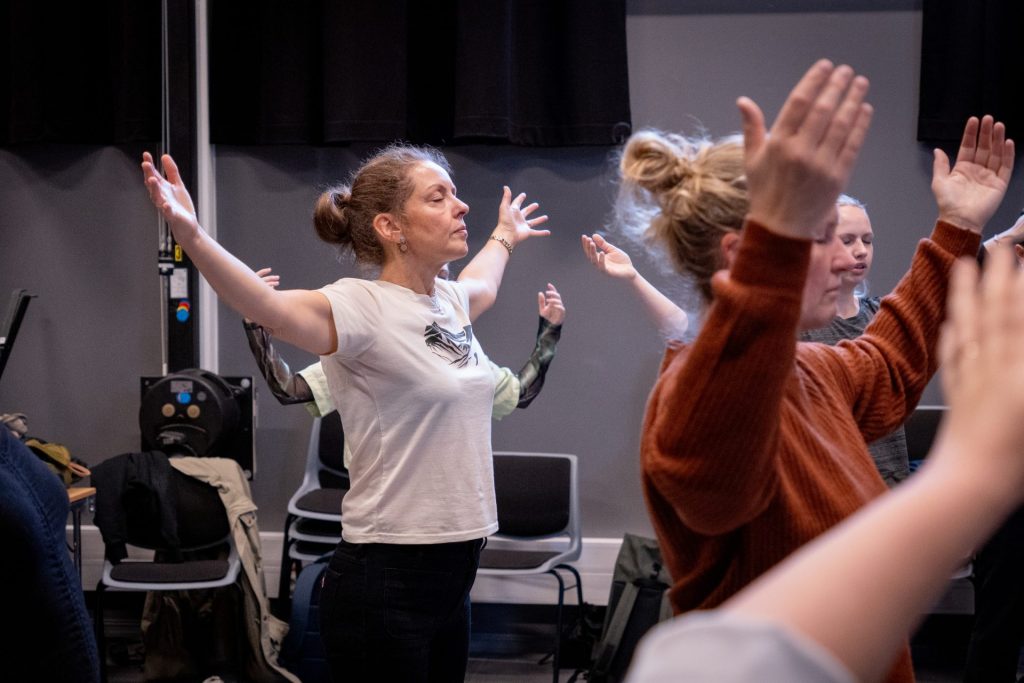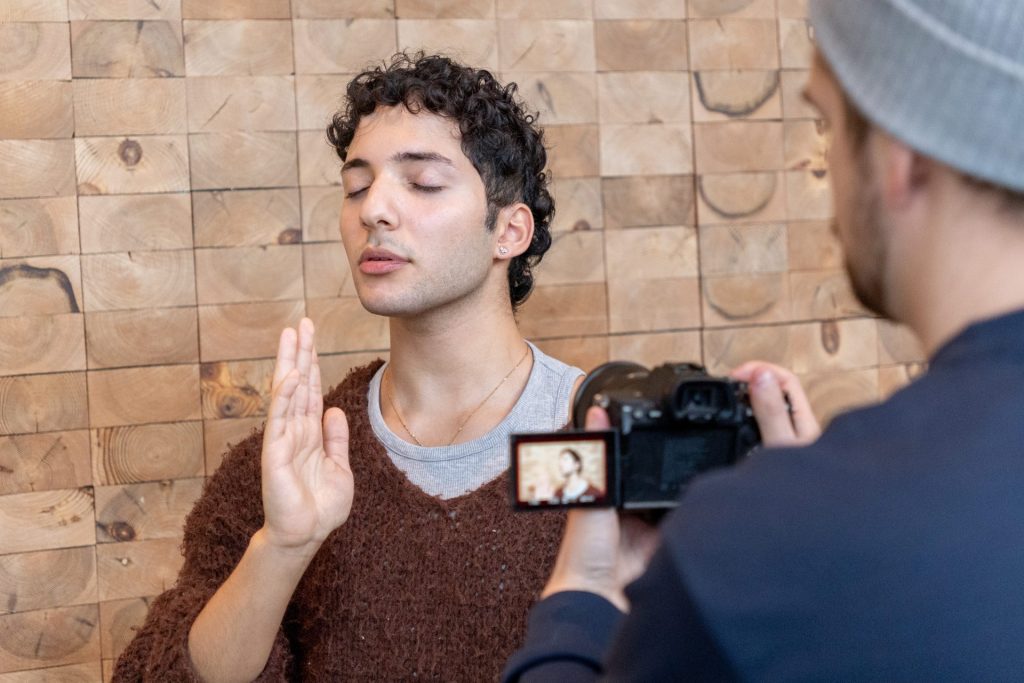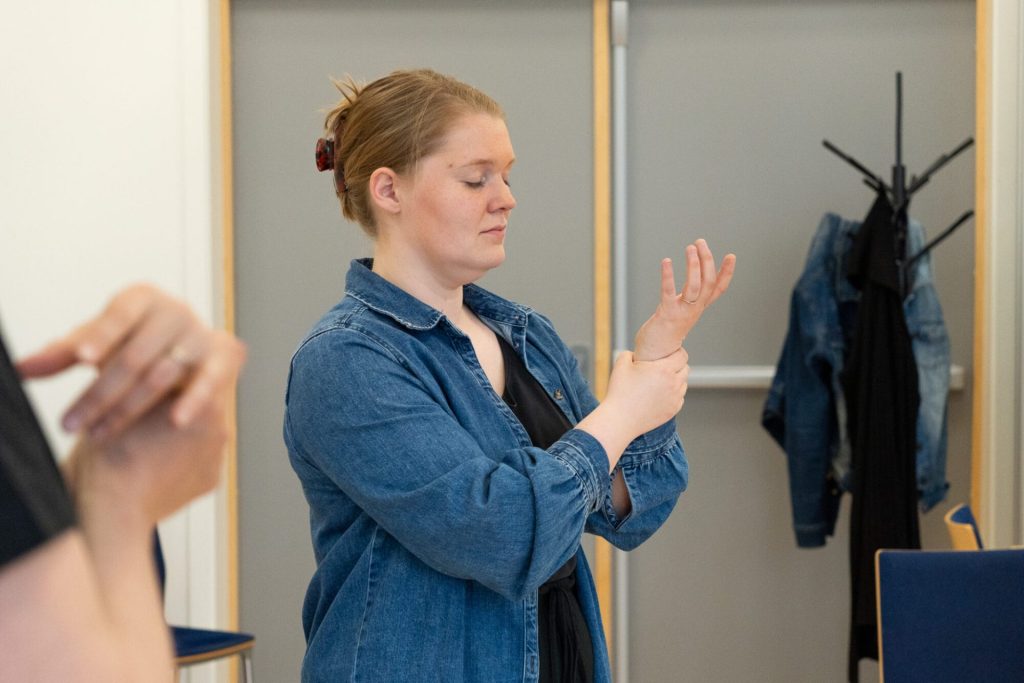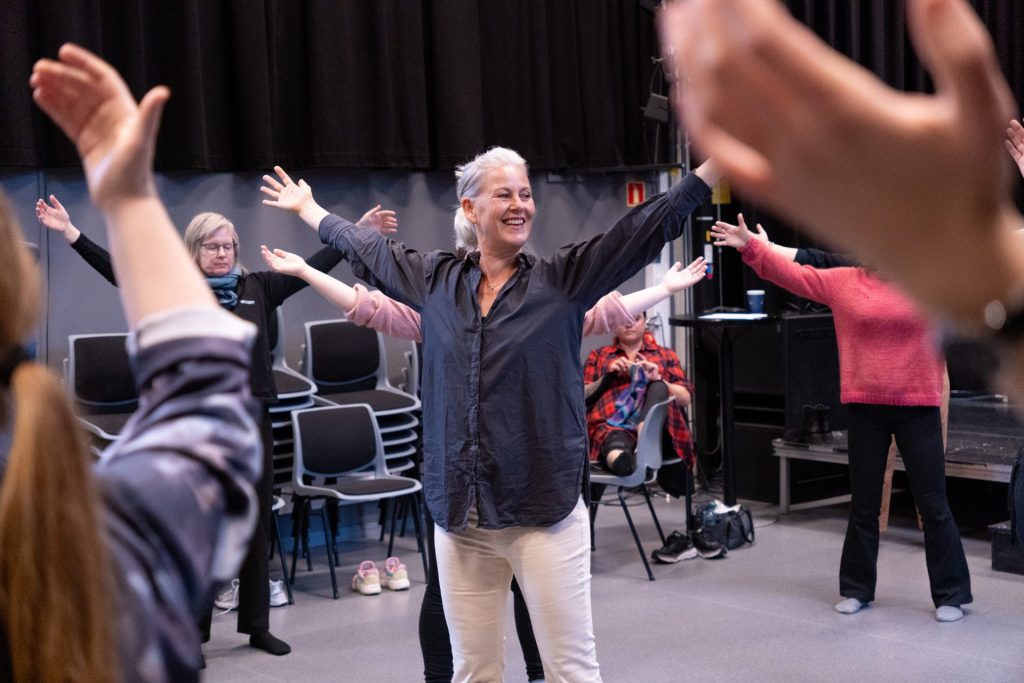In Motion - A Guide
In Motion is a guide designed for everyone, with the aim of raising awareness about movement and dance as a natural and integrated part of life.
Our body is always with us – but how often do we actually check in with how it feels? Increased physical movement promotes health and can significantly enhance wellbeing.
In collaboration with Dans i Trøndelag and the Norwegian Resource Centre for Arts and Culture in Education, we are developing In Motion, a guide that offers a pause in the day, helping more people experience a sense of safety in their own bodies—both individually and in interaction with others. The guide consists of simple, practical exercises accessible to all, whether done alone or with others. These exercises invite participants to listen to their body, breath, and movement.
The guide is divided into three parts:
- Movement for Self-Care
- Movement for Attention
- Movement for Creativity
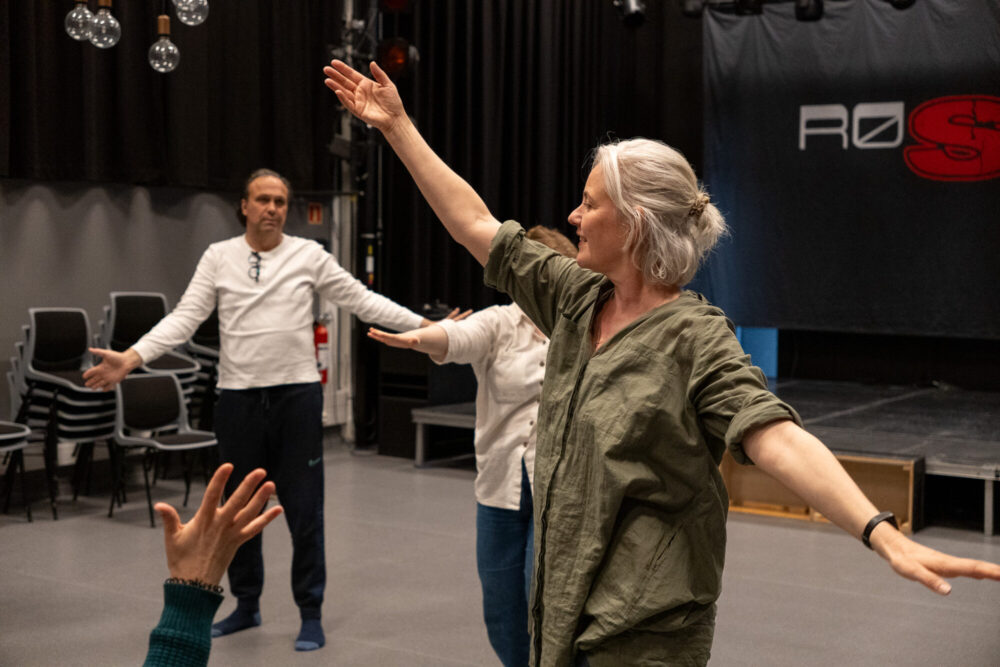
Movement for Self-Care
Movement for Self-Care is a guide that invites you to use simple exercises. Through breath, rhythm, and presence, it provides tools that promote well-being, reduce stress, and enhance body awareness. The exercises require no prior knowledge and can be adapted to your daily routine.
The videos focus on various goals: tuning into one’s breath, checking in with touch, moving and stretching, playing with different ways of walking, shaking to awaken the body or release stress, and regaining calm and grounding. Most of the exercises can be done in small spaces and adapted to different physical abilities — whether standing, sitting, or lying down.
Developed in 2024, Movement for Self-Care included the testing of nine exercises by students at Nord University, teacher education students at NTNU, and healthcare professionals in Trøndelag. Feedback was gathered through seminars and anonymous online forms. Many reported an initial resistance to movement: “For me, it was the intention behind it that helped me get over the threshold of moving at work in front of others.” Several participants found favorite exercises and noted improved awareness and bodily presence: “I became better at activating or relaxing my body,” as one participant put it.
Based on the feedback, seven exercises were selected for final production, re-filmed, and accompanied by voice-over narration.
Over the course of five weeks, exercises—delivered via video and text through a website—were tested. Participants shared their experiences via seminar discussions or anonymous feedback forms.
The exercises led to significantly increased body awareness. Many expressed that the exercises enhanced their sense of presence and well-being. They felt the exercises offered a “breathing space” in their busy and stressful workday, helping to lower stress levels and improve both mental and physical states. A key insight was that participants experienced a renewed sense of empowerment and bodily presence — something many felt was lacking in everyday life.
These findings will form the foundation for future research on the effects of these exercises.
Movement for Awareness
Movement for Awareness is currently under development. It explores the relationship between body and mind—between the inner and outer self. The exercises aim to enhance inner calm, mental focus, and presence in daily interactions. In spring 2025, participants of different ages and professions—including those in health and care services, the arts, and the tech sector—will pilot movements based on audio-guided instructions.
Movement for Creativity
Movement for Creativity is currently in the planning phase.
Background
The idea for the guide originated during a 2023 national seminar on dance and health, which brought together dance artists and healthcare workers. Participants shared practices, experiences, and insights—highlighting the need for tools in the dance and health field, as well as a desire to create a network for ongoing knowledge exchange.
Participant Feedback on Movement for Self-Care Background
- Getting in touch with my own body feels unnatural to me. – Pawel, healthcare assistant.
- Today I’ve been thinking—we all live different lives and face pressure. It’s easy to lose the feeling of ‘where am I?’ Where is my body? (...) Just this exercise (rubbing hands together) helps me feel, ‘Yes, I’m here. That’s important. I’m important! – Elena, environmental therapist.
- I’ve never liked being watched while I dance. – Lillian, care worker.
- I feel more at home in my own body. I sense—here I am. – Charlotte, environmental therapist.
- I stand more firmly on both feet. My breathing is slower, and my shoulders are more relaxed. It’s good to be allowed to think about something other than the next task. – Håvard, nurse.
- If you allow the dance in, it might help break up the workday a bit. Taking a moment to ‘clear your mind’ can help you stay focused the rest of the day. – Laila, activity coordinator in health and care services.
- You’re often stuck in your own bubble, caught up in the tasks at hand. You’re not really present—maybe even feel a bit empty. But doing these exercises feels like opening up. It’s been a completely positive experience. – Ingebjørg, healthcare assistant.
- I breathe better. I miss feeling centered when I skip the exercises. – MBC student.
- The movements feel meaningful beyond the physical. I feel self-care, self-worth, and permission to take up space. – MBC student.
- The exercises help me ground myself when I need it, activate when I need it, and offer care when I need it. – MBC student

